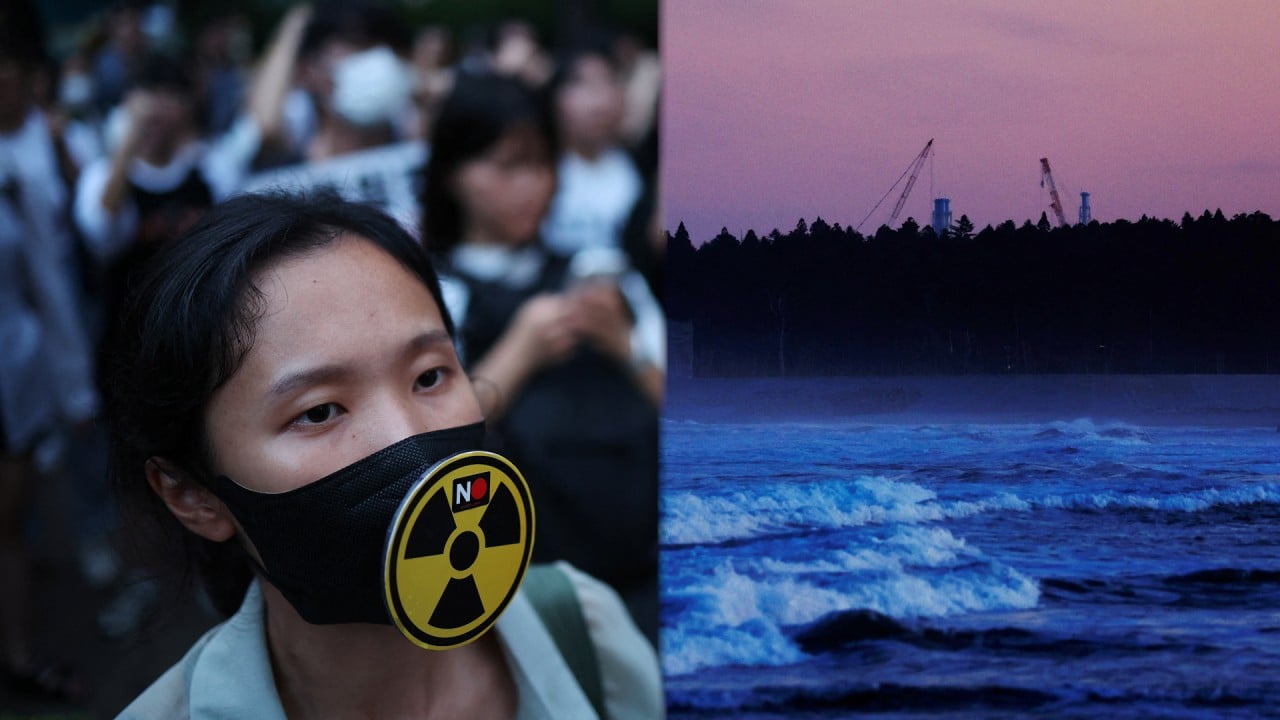Viral reaction to radiation in southern China highlights alarm over Japan’s Fukushima nuclear waste water release

[ad_1]
A government report detailing airborne radiation levels in major Chinese cities went viral earlier this week on the country’s social media platforms, after the southern coastal metropolis of Zhuhai was ranked at No 2.
Tibet topped the data released by the radiation monitoring centre of the Ministry of Ecology and Environment on Thursday, but this was put down to the region’s active geological conditions and higher altitude which increase exposure to cosmic radiation.
Weibo users, meanwhile, speculated on the source of the radiation levels in Zhuhai.
“The government should test the seawater in the direction of Japan,” another user said.
The Chinese public, meanwhile, are worried about the long-term health impact of low-level radiation. Some Chinese cities have seen a salt-buying frenzy amid a misguided belief it will counteract radiation effects, while a brick was reportedly thrown at the Japanese embassy in Beijing.
The measure of concern is the airborne radiation rate, which provides a real-time snapshot of environmental contamination levels. It covers both naturally occurring radiation from the Earth and cosmic rays from space.
The data is acquired through 368 automatic radiation monitoring stations across China, 118 of them located around nuclear power plants in a fan-shaped pattern. The rest are in urban parks, rooftops, and green spaces in major cities.
Recent readings from a station at Sun Yat-sen University in Zhuhai showed levels consistently above 130, while most other readings within Guangdong were below 100.
However, the Zhuhai Ecological Environment Bureau (Zhee) said that the numbers were within the normal range. “Historical data in Zhuhai indicates a range of 127.9 to 332.1, so 130 is considered normal,” the bureau said in a statement.
Why do many scientists oppose Fukushima radioactive waste discharge?
Why do many scientists oppose Fukushima radioactive waste discharge?
“Radiation monitoring is an essential part of ensuring nuclear and radiation safety. It provides the public with scientific, accurate, and reliable information, and protects the public’s right to know about nuclear and radiation safety,” Shanghai-based digital media The Paper quoted a Zhee representative as saying in a report published on Thursday.
Radiation levels are normally influenced by natural geological conditions and cosmic rays. Short-term factors like rainfall and soil moisture can also have an effect on readings.
Researchers from the China University of Geosciences said in a 2005 paper that Zhuhai, located in the Pearl River Delta, had widespread distribution of granites from the late Jurassic era.
These rocks generate naturally high background radiation, making Zhuhai one of the areas with the highest levels of geological background radiation in China.
In comparison, most areas in Japan have a low air radiation rate of below 100. However, certain monitoring stations near Fukushima recorded figures as high as 3,800 on Thursday, greatly exceeding the readings before the nuclear disaster.
Despite Japan’s explanations and safety assurances on the waste water release, several mainstream scientific organisations have raised concerns over the potential harm.
“Even with extensive scientific research, people will still be worried when you release contaminated water into the ocean on such a large scale,” Lu Binglin, chairman of the Hong Kong Nuclear Society, told the BBC in July.
[ad_2]
Source link






